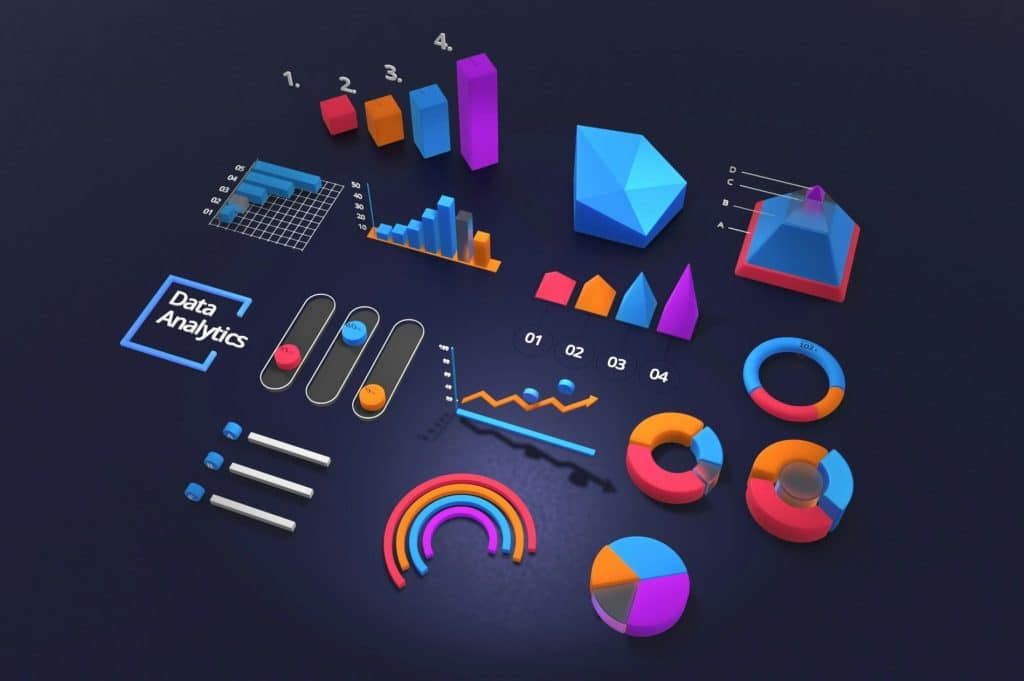The Shift Toward Data-Driven Marketing
Relying on gut instinct or outdated tactics for your digital marketing strategy just doesn’t cut it. Guesswork leads to bloated ad spend, underperforming campaigns, and murky ROI that’s hard to justify.
Data-driven marketing, on the other hand, replaces the uncertainty with clarity, giving marketers a precise view into what’s working, what’s not, and where to pivot.
And data isn’t just a buzzword. Data is a tool to guide smarter decisions, drive stronger performance, and stay competitive in a landscape where every dollar, every click, and every conversion counts.
Why Data Is Your Most Valuable Marketing Tool
Data isn’t just a scoreboard – it’s the playbook.
When used strategically, it moves beyond surface-level reporting and becomes the engine behind sharper targeting, smarter spending, and more meaningful measurement. Instead of casting wide nets and hoping for results, marketing teams can pinpoint the right audiences, allocate budget where it drives impact, and refine campaigns based on what actually delivers.
It shifts data from being a passive tracker to an active driver of strategy, transforming it into one of the most valuable assets in a modern marketer’s toolkit.
What Sets Data-Driven Marketing Apart?
Data-driven marketing closes the gap between what customers want and how brands show up. It connects the dots between intent, action, and conversion, revealing not just who your audience is, but what they’re trying to accomplish in real time.
By analyzing behavior patterns, search signals, and engagement data, marketers can uncover the motivations behind every click and tap.
This insight allows us to hit the “marketing bullseye.” We use the right message on the right channel at the right moment to turn passive interest into meaningful and impactful action.
How to Build a Marketing Strategy That’s Powered by Data
A data-driven marketing strategy uses real customer insights to guide every decision.
From who you target to how you engage them, a data-driven marketing strategy replaces the guesswork with measurable definitions and insights. The result? A smarter marketing strategy that is rooted in fact, not feeling. A marketing strategy that is measurable, and as a result, flexible.
And most importantly: a marketing strategy with stronger outcomes.
So, how do we build a data-driven marketing strategy? Let’s get to it.
Use the Right Data to Understand Your Audience
A successful data-driven marketing strategy begins by knowing your audience. Who are they? What do they do? What motivates them? Understanding demographic data and behavioral data is the key first step to a successful, data-driven strategy.
- Demographic data: who is my audience? What characteristics do they share?
- Behavioral data: what actions do they take? What do they want?
Combining this data helps inform who we target and how we target them.
Personalize Content and Messaging at Scale
Data, content and messaging don’t seem like they go together — but they can certainly go hand-in-hand. Marketers can use data to make content more customized, more relevant, and more successful.
How?
Data can help inform how we shape our content and our messaging. Using data, we can:
- Segment emails to go to more specific audiences
- Create custom landing pages to speak to specific pain points
- Provide personalized offers based on audience needs
Data helps us find better ways to connect with our audiences to make every interaction purposeful and effective.
Adjust in Real Time, Not After the Campaign Ends
Data isn’t a one-time application – it’s ongoing. Data-driven marketing means collecting and using real-time data to adjust messaging, budgets, channels, and more.
Dashboards and other live performance reporting can (and should) be used to see what’s working while pivoting away from the things that are not.
In short, a data-driven marketing strategy is data-driven at all steps of your campaign, not just the end.
Make Every Channel Work Together
Cross-channel alignment ensures that every touchpoint works together toward a unified message and goal.
So, how can we better connect channels? Data. Data from various channels – email, paid media, search, social, etc. – can help identify what’s working across your marketing efforts and what’s contributing to your successes (and shortcomings).
The result? A more seamless experience for your customer, and a more successful campaign for your business.
Use Predictive Tools to Stay Ahead
The worst type of data is no data. Good data provides insights. The best data is proactive.
Rather than wait for patterns to emerge, tools like AI and other predictive analytics use data to help anticipate what’s likely to happen next. And provide marketers like us to act.
Data from sources like churn prediction models can help identify high-risk customers before they leave. Lookalike audiences are built from data to find new potential customers that resemble your best customers. Content scoring tools help optimize content to ensure our content and messaging will meet expected behavior patterns.
AI and other predictive tools help you stay ahead, not just keep up.
How Data-Driven Marketing Drives Better ROI
OK, so we’ve built a data-driven marketing strategy – but why? As a marketer, the answer should be obvious: ROI.
Data-backed marketing provides a stronger ROI, both in dollars and effort. A data-driven strategy finds efficient ways to spend your budget by ensuring you’re targeting the right audience in ways that are going to lead to the most impactful results. And your ROI will benefit greatly: stronger performance, higher conversion rates, and improved use of your marketing resources.
(Bonus points: use real-time data to allocate your budgets (and your effort hours) to focus on the areas where they are having the greatest impacts!)
- 13,000+ Clicks Driven | 4.2 Million Impressions
- 873% Increase in AI Citations | 5.7 Million Impressions
- 24 Comprehensive Blog Posts Developed
- 579% Increase in Conversions
- 130% Increase in Conversions
- 123% Increase in Referrals | 16% Referral Growth
- 31% Increase in Traffic Across All Academic Pages
- 47% increase in organic program pageviews
- 71% increase in overall ROI
- 16% More Traffic | 183% Increase in Conversions
- 218% More Conversions | 66% CRO Boost
What Gets in the Way of Implementing Data-Driven Marketing?
Real talk: good data is hard.
Most marketers want to use data, but often run into obstacles.
- Scattered or incomplete data can leave marketers lacking.
- Unclear ownership can lead to frustration and dead ends.
- Privacy regulations leave you asking “how?” when it comes to data collection.
And unfortunately, there’s no easy answer, or data magic wand. These are very real challenges every data-driven marketing strategy faces.
Building a Team Culture That Embraces Data
So, what can we do when faced with those obstacles?
It begins by building a data-driven culture. This sets the real foundation for data-driven marketing. Whether it’s investing in new data collection tools and systems, to creating defined measurements and KPIs, a data-driven culture sets the tone for using data effectively throughout the company, including your marketing efforts.
And even that isn’t easy, and it won’t happen overnight. Start by introducing data into your strategies. Share performance metrics. Share audience insights. Demonstrate data collection tools. Introduce data to your stakeholders in a way that is intriguing, insightful, and purposeful to start building a data-driven culture from top to bottom.
Turn Data into Your Most Valuable Marketing Asset
Data-driven marketing provides better results through smarter strategy and sharper execution.
At FourFront, we firmly believe that. We provide data science for digital marketers. Our team of digital marketers, combined with our analytics team, use data to provide our clients with data-driven marketing strategies that produce real and impactful results.
And if your marketing strategy isn’t driven by data, you’re missing real results, too. Let’s change that and start building smarter strategies together.









